It was a magical trip. Our older son, in true teenager style, said to his father while walking on a gorgeous beach New Year's day, 2000, "Well Dad, short of taking us to the moon, this was the most amazing thing you could have done for us."
This is my post from January of 2011. It got a lot of comments because it hit a nerve. We are in this business, all of us, to help children, and to help ALL children. So even though most teachers and school librarians are taking a well-deserved vacation right now, and writers are taking off here and there (next month we're going to the Galapagos to revisit those gorgeous islands, and to speak), our hearts never take a vacation, do they? Speaking of hearts, knock wood, no more problems with that organ here. See you in the fall!
When I was thinking about what I would write for this post, after a month filled with family medical stuff, which included intense nerve pain for a month (me); a middle of the night dramatic collapse (husband) followed by 34 hours in a NYC Emergency Room (if only I wrote for grown-ups I'd have enough material for the rest of my life just from the set of rotating characters in the bed next to us), I decided I would take the easy way out and ask some teacher friends of mine to give me a list of books they wish someone would write.
[By the way, so you pay attention to the rest of my post and don't worry too much about us, as I write this, my husband is walking around the apartment strapped to a portable heart monitor, which I've named Halle Berry so he doesn't hate it so much, and which I am convinced will show as that his AFib was not a common occurrence; and my pain has, in the first words of ?John Stuart Mill? (someone else?), somewhat abated. I have every reason to believe we both are going to be o.k., though I must say the most commonly used word around our place lately is "vulnerable"...]
Anyway, thinking I'd let some t
A couple of weeks ago I was lucky enough to tag along on a mini book tour of my husband's. They were publishing editions of his latest book in The Netherlands and Bulgaria and his publishers asked him to come give talks in three places: Amsterdam; Gent, Belgium; and Sofia, Bulgaria. I'd always wanted to visit Amsterdam. Belgium sounded nice, but when he said Bulgaria, I said, "I'm coming!" When else would I have a chance to go there?
I can't tell you about the whole trip in a short piece (though I would love to), but I will tell you about one thing from each place.
First, the thing that "blew my mind" in Amsterdam. No, not that. I was too jet-lagged.
The Anne Frank house. I knew I would have to go there. I read
The Diary of Anne Frank when I was in sixth grade. I'll never forget the moment I finished it, at a family gathering at my grandparents' apartment. I adored everyone in that apartment, and yet when I closed the book, in hysterical tears, I looked at my grandparents, my parents, my aunts and uncles, my older cousins, and I thought: I hate you. I hated them why? Because
they never told me. My younger son had the same reaction when he first learned about the Holocaust in Sunday School. Of course this is not about not being told, it's about learning it for the first time
for yourself. Experiencing the horrors of the world unfiltered in some way. That happened to me again in the museum that is in Anne Frank's hideout. Walking through the rooms where Anne and her family hid out, reading Anne's words, looking at photographs of Anne and her family, and the others, touching things Anne might have touched, I was deeply moved. Walking through with a crowd of other people from all over the world, all of us silent, was an emotional experience. Thinking of Anne experiencing first (and last) love in those rooms, was almost unbearable. Reading her gorgeous words, her genius that was snuffed out by evil, I was near tears. But it wasn't until the end that I was walloped.
The people at that museum know how to tell a story.
When you get to the end, there are videos of people talking not about Anne, but about her sister Margot. Saying things such as (not an exact quote), "I don't know why they focused on Anne. It was Margot who was special, brilliant..." At first I was upset because this felt like a betrayal of Anne. Then I realized with a thunk: It's all about Margot, isn't it? Because of course Margot was special. Of course her friends would think it was her story that should be told. And how many friends of the millions upon millions of people who were killed in Germany and Poland and etc. by Hitler and co, and in Russia and Lithuania by Stalin and co, and etc. etc. etc. would think that it was their friend whose story should be told? You get to the end of Anne's story and you are not allowed to feel grief about just her life. You have to multiply it by an unimaginable number. And that is, of course the beauty of Anne's story--it is particular and it is universal. But hearing about Margot makes the whole thing overwhelming. Why didn't anyone ever tell me about MARGOT?
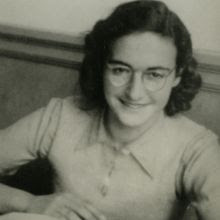 6 Comments on Inspiration in Amsterdam and Sofia, last added: 6/21/2011
6 Comments on Inspiration in Amsterdam and Sofia, last added: 6/21/2011
My younger son is graduating from college today so while you read this I will be trying womanfully not to cry too hard in public. I will probably not be succeeding, so wish for me, please, that he does not witness my blubbering. It's all I can ask for.
That said, I do have a life beyond hankies and graduations and B and his brother, I swear I do...and in that life I am a writer and …
********** ********** **********
Lately people have been asking me to recommend good books to read about writing narrative nonfiction. I have a few personal favorite books about writing that I read years ago and dip into now and again. I couldn’t find all of them (I tend to lend them out), but here a few of my favorites among the many I have looked at (or at least bought) over the years:
If You want to Write by Brenda Uleand
One Writer's Beginnings by Eudora Welty
What If? by Anne Bernays and Pamela Painter
Writing on Both Sides of the Brain by Henriette Anne Klauser
Bird by Bird by Anne Lamott
Becoming a Writer by Dorthea Brande
I would say that out of all of these books the one that I go back to most often is Writing On Both Sides of the Brain because Klauser taught me something I need to be reminded of often. She says we have a critic inside our brains (no, really?) and that critic should be given her due, but not while you are in the creative process of writing a first draft. During that time you kick out the critic (send her to a relative's house) and tell her you will let her back in later. Then you write happily and uninterruptedly without a nagging voice telling you what's wrong with what you're doing. Later you invite that critic back (notice that this is by invitation). The critic is very helpful during your editing phase, but should be sent away again when you need to tap into the creative, UNcritical voice again. It does work that way for me: creative brain needed (right side) then analytical brain (left side) called in to help. Knowing this process makes it easier for me to silence the critic when she gets in the way. This simple piece of wisdom has saved me, my sanity, and my books many, many times.
I also go back quite often to What If for Bernay's and Painter's great writing exercises. Although these writing exercises are meant for fiction writers primarily, they are useful for nonfiction writers as well, especially those of us who want to use the techniques of fiction in our nonfiction: scene, character, plot
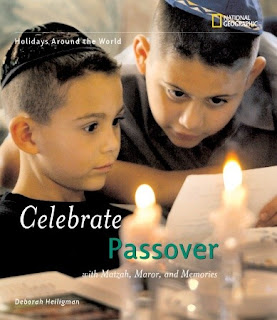
Happy Passover! And almost Happy Easter!
I am taking this day to talk about something related to my post last month: art. This month it's about covers, and specifically the covers of two of my books--
Celebrate Passover and
Celebrate Easter. First of all let me just say this is not some sneaky way of getting you to buy my books. Since Passover has already begun and Easter is just days away, it's too late for this year. If I were a truly savvy marketer I would have written this post a month ago. But I'm not that savvy. Not even slightly. This came about because I took out the books to bring them to the family seder (o.k., just one of the books, guess which one?) and remembered that they changed the covers before they put them in paperback. Can you guess why?
Above is the cover of the hardcover edition of my Passover book.
Below is the cover of the paperback edition, out about a year later:
Why the change?
Here's a hint, by way of my book about Easter. Hardcover:
And the paperback:

We all know that an author should never say yes to a school visit without first knowing the terms. But last summer Cynthia Ruptic, the lower school librarian at the Rabat American School [RAS] emailed me. “Come to Rabat for two weeks. We’ll have a great time.”
“Yes! Yes! Yes!”
Usually these international trips last a week, at least tha

t’s what I’ve been told as I had never done one before. But Cynthia and the upper school librarian, Lora Wagner, thought that since I write for children and young adults, and since I’m a writer and photographer, two weeks would be a better fit. Two weeks in Morocco? How could I resist.
Lora and Cynthia
That was last summer. As the time for my visit neared, North Africa exploded in a sea of Facebook revolution. My good friend, Liz Levy, was trapped in Egypt along with Bruce Coville and his wife. Trouble in country after country inched closer to the border of Morocco, and the conflicts grew more violent. Was this the right time to talk about nonfiction and photography. Would the students concentrate on anything other than what was happening on their continent? Was it safe? The school principal, Kathy Morabet, emailed, “Come! Morocco is peaceful.”
And so ….
My two weeks in Rabat were intense and wonderful. Before I left, though, Cynthia emailed a program that freaked me out by its Cecil B. DeMille, Technicolor-coded complexity. There was a two-page spreadsheet, chock-a-block filled with classes, photography workshops, after-school club meetings, auditorium presentations, and a teacher presentation. Class visits were from Pre K to 10th Grade. I immediately came down with a sore throat that lasted until I arrived.
In addition, Cynthia and Lora set up a series of half hour meetings with each teacher before I was to meet their class. Yikes! When would there be time to do all that? Those meetings turned out to be a godsend. They gave me the sense of what the teachers were doing and how my prepared programs could be adapted to reinforce their teaching. Class projects ranged from growing silk worms in a shoebox to scribes in Ancient Egypt. Science, math, and ancient history are not exactly a clear fit with my work as a contemporary nonfiction author. And yet, when we put our heads together we found ways to bridge the gap.
So when Alice Mendoza’s kindergarten class went to work on the RAS
Storypath Park, the students photographed the tops of the school’s palm trees and attached prints to clay models that represented the trunks.

Photo by Alice Mendoza.
Before I start my blog post, a quick announcement: Tonight, March 15, at 7:30 I will be on a panel at Boston College with
Susan Goodman (who INKed yesterday) and
Lorree Griffen Burns talking about NARRATIVE NON-FICTION, called TELL ME A STORY AND MAKE IT TRUE. If you are in the area, please come! Here's the
link.
Now back to our regular programming...
I’ve written a bazillion nonfiction picture books. (Yes, that’s accurate, a bazillion.) And a few fiction picture books, too, by the way.
I have illustrated nary a one. I tell the kids who ask me at school visits that if I did my own illustrations no one would buy my books. Ha ha. It's so true. I also have not sung in public since I was the only girl not to make the chorus in sixth grade. (Would it have been that hard to put me in there, in the back? Really?) Wait, this isn’t my therapy session? Sorry. But my point is this: When I write nonfiction picture books they are either illustrated with photographs or by the deft hand of someone else. Right now I am eagerly awaiting sketches from a brilliant illustrator for my book about a mathematician. I know she is going to bring much more to the book than I ever could, or could ever imagine.
Yes, I am in awe of illustrators and forever grateful to those who illustrate my books. I got to wondering recently what it would be like to create a book from start to finish as others here on I.N.K. do, (I bow down to you who do) and just as I was thinking about that, a lovely new book landed on my desk. A book that I wish I had written, and yes, illustrated. Meadowlands by Thomas Yezerski. (FSG)

Tom is a friend of mine and I asked him if he would share his process with us so I could live vicariously. I asked him which came first, the words or the pictures.
My illustration process usually begins with the words. Actually, it begins before that. It begins with my being interested in something. In this case, it started with getting lost somewhe

By:
Susan E. Goodman,
on 3/14/2011
Blog:
I.N.K.: Interesting Non fiction for Kids
(
Login to Add to MyJacketFlap)
JacketFlap tags:
nonfiction,
writing,
American Revolution,
2008 titles,
Susan E. Goodman,
US History,
Deborah Heiligman,
finding the truth,
climate science,
Add a tag
In my somewhat new Monday slot, more of my posts fall on holidays (duh!) and I have just let them pass. Last month, for example, Valentine’s Day came and went, but my heart wasn't in it.
 Today, however, I’d like to celebrate this week’s unofficial holiday that, in my opinion, deserves to become official--the onset of Daylight Saving Time (DST). What an emotionally lifting gift—especially to New Englanders who have been battling the suicidal impulses that accompany a 4:30 sunset. For months we have tried to keep our spirits up as the light inched back a minute at a time. Then PRESTO CHANGO! In just one day, arbitrary magic multiplies the jump times 60. We get a whole new hour of light—and life becomes brighter in every way. If only Zoloft worked so well.
Today, however, I’d like to celebrate this week’s unofficial holiday that, in my opinion, deserves to become official--the onset of Daylight Saving Time (DST). What an emotionally lifting gift—especially to New Englanders who have been battling the suicidal impulses that accompany a 4:30 sunset. For months we have tried to keep our spirits up as the light inched back a minute at a time. Then PRESTO CHANGO! In just one day, arbitrary magic multiplies the jump times 60. We get a whole new hour of light—and life becomes brighter in every way. If only Zoloft worked so well.
As nonfiction writers we are obligated to tell the truth and nothing but the truth, right? What about the whole truth, though? In this case, I would have to admit that DST causes increased danger of traffic and pedestrian accidents during its first week because of sleep cycle disruption. It was never created to help the farmers or reinstated more recently to save energy. In fact, farmers hate it and many experts believe it increases energy costs: electricity for air conditioning and over $100 million a year for the airlines.
 Why did this idea gain purchase? Some British golfer in 1907 realized that if one hour of sunlight was switched from the sunrise side to sunset, he’d have time to get to the back nine. In fact, when the 1986 Congress debated the issue of extending it into March, the golf lobby went to town. According to Michael Downing, author of Spring Forward: The Annual Madness of Daylight Saving Time, the golf industry estimated the extension of DST would increase their revenues by 400 million 1986 dollars, the barbecue industry over $100 million. In other words, if you give Americans the chance to go outside at any time, they will spend money.
Why did this idea gain purchase? Some British golfer in 1907 realized that if one hour of sunlight was switched from the sunrise side to sunset, he’d have time to get to the back nine. In fact, when the 1986 Congress debated the issue of extending it into March, the golf lobby went to town. According to Michael Downing, author of Spring Forward: The Annual Madness of Daylight Saving Time, the golf industry estimated the extension of DST would increase their revenues by 400 million 1986 dollars, the barbecue industry over $100 million. In other words, if you give Americans the chance to go outside at any time, they will spend money.
Telling the whole truth about DST is not a horror. An ironic example of one of America’s worst traits, perhaps, but not a deal-killer. In the unlikely event that I ever wrote a book about DST, I’d “out” its origins with relish.
But what about other times, when telling the whole truth in our books for younger children is a lot more painful? Then how far do we go? I just attended a conference on sustainable energy this week where everyone had already accepted the devastating long range consequences of climate change as inevitable. Nobody was talking about getting better gas mileage or "clean coal." The focus was on how to think about reconfiguring communities in the Brave New World. I'm not considering a book about this subject either; but how do you give kids hope and this kind of information at the same time?
 When I wrote See How They Run: Campaign Dreams, Election Schemes, and the Race to the White Hous
When I wrote See How They Run: Campaign Dreams, Election Schemes, and the Race to the White Hous
When I was thinking about what I would write for this post, after a month filled with family medical stuff, which included intense nerve pain for a month (me); a middle of the night dramatic collapse (husband) followed by 34 hours in a NYC Emergency Room (if only I wrote for grown-ups I'd have enough material for the rest of my life just from the set of rotating characters in the bed next to us), I decided I would take the easy way out and ask some teacher friends of mine to give me a list of books they wish someone would write.
[By the way, so you pay attention to the rest of my post and don't worry too much about us, as I write this, my husband is walking around the apartment strapped to a portable heart monitor, which I've named Halle Berry so he doesn't hate it so much, and which I am convinced will show as that his AFib was not a common occurrence; and my pain has, in the first words of ?John Stuart Mill? (someone else?), somewhat abated. I have every reason to believe we both are going to be o.k., though I must say the most commonly used word around our place lately is "vulnerable"...]
Anyway, thinking I'd let some teachers do the work for me (which in no way reflects my history with teachers, I swear), I started with my friend Jane Ribecky Geist, whom I've known since fourth grade. Jane teaches fifth grade in Allentown, Pennsylvania, where we both grew up. Her school is Union Terrace Elementary school. I visited there as an author many years ago and then volunteered in the reading lab, where I got to know the dedicated teachers and the circumstances of much of the student population. I have decided to start and stop with Jane today because what she wrote to me was so moving--and, incidentally, fit emotionally in a profound way with our last month (think vulnerability)--that I don't see the point in going farther right now. But I do hope teachers will chime in with their own wish lists and suggestions.
I asked Jane what was her wish list for nonfiction books for her kids, and here is what she said:
"I wish there was more nonfiction for kids on the unsung heroes in our history. I am just finishing Unbroken by Laura Hillenbrand. I was telling my kids about it and they were enthralled! I even brought the book to school and selected sections for some of them to read. Any time we talk about history - and I mean truly talk about it, no Hallmark card renditions allowed - they don't want to stop! From the explorers to present day (thank you, Miss Laudenslager, for giving us background knowledge), there are people who made our nation what it is today, but they are not written about enough. [Note: Miss Laudenslager was our fifth grade teacher.] Spies, women who did their part, tales of defiance and survival - even the tricky strategies of the known people....when Washington decided to attack the Hessians (Valley Forge) and ignore the generally accepted policy of abstaining from battle on holidays...are excellent topics. My kids don't want to hear that everyone was smart, motivated, and morally sound. Let them know that these people may have been a lot like them. But they were passionate! And that is what allowed them to persevere - something kids in the Allentown School District must do everyday - continue to continue despite the hugely unfavorable conditions of their lives."
What Jane means about the "hugely unfavorable conditions of their lives" is this:
18 Comments on A Teacher's Wish List, last added: 1/21/2011
Granola is Not NonGrapefruit
(Especially not my granola.)
The other night my husband handed me a book we were both reading for our book group (TINKERS by Paul Harding; it’s amazing. Read it.). I looked at Jon’s bookmark and found this incisive and inflammatory quote from John McPhee:
“Nonfiction—what the hell, that just says, this is nongrapefruit we’re having this morning. It doesn’t mean anything. You had nongrapefruit for breakfast; think how much you know about that breakfast.”
This is from his Paris Review Interview Spring 2010 that I wrote about last month.
Think how much you know about that breakfast. I love it. And I also love the implicit question: what should we call this type of writing? Considering how much time we put into working on it, thinking about it, crafting it, caring about it, it’s just insulting that it should be NOT something. I posted the question on Facebook (Friend me; I have a literary salon going—I make a comment, leave to write or research for a day and come back to long conversations going on without me).
So I got a lot of comments; most people sharing my annoyance (One of my other heroes, Jane Yolen, said: “I have been complaining about this for over thirty years.”) and suggestions:
VERITAS (Richard Rhodes years ago tried to make a case for VERITY);
FACTION (But Jane says that’s already a term and means information that twists the truth, more fiction than fact, so that won’t work);
NARRATIVE NONFICTION (Thanks, Anita Silvey, and thanks, too for your great new website);
A lot of us call it narrative nonfiction, but it still has that NON problem;
TRUE DAT (!);
REALITY;
LITERATURE (thanks, Ed Sullivan)
and more.
Over on Twitter people also got into it:
“True Stories! Then: We call
On Saturday I was thrilled to get up at the crack of dawn to attend the Rutgers One-on-One Plus conference for the second year in a row. (I really was thrilled. I'm a ridiculously early riser anyway, and besides, that's why coffee was invented.)
Last year was fabulous, and I expected this year to be the same. It was. For those who aren't familiar with the conference, attendees are paired with a mentor– an editor, agent, author or illustrator– who spends 45 minutes giving feedback on your work.
This year I met with a lovely author who offered many insightful suggestions for my picture book dummy... ones that I think will help take it to another level. Meeting her was just one of the delightful surprises of the day!
There was also a great panel of speakers– Deborah Sloan, Alvina Ling, and Katie Davis– who talked about the value of social networking and some of the ins and outs of Facebook and Twitter. Check out #rcclbuzz on Twitter if you want to learn more. (Dear Twitter, I do love you, but have a hard time keeping up!)
Oh! And I can't forget the 5-on-5 group, where groups of five mentees and mentors meet to discuss whatever burning questions about the industry anyone might have.
The grand finale of the day was keynote speaker, the awesome Deborah Heiligman. (She really is awesome, and not just because she handed out waterproof notebooks to everyone in the audience in case we find ideas in the shower! If you ever get a chance to hear her talk, do it.) Deborah was funny and inspiring. Instead of me trying to paraphrase what she said, here it is in her own words. And here's another take.
Good, good stuff. Heading off to my bubble now...
View Next 25 Posts





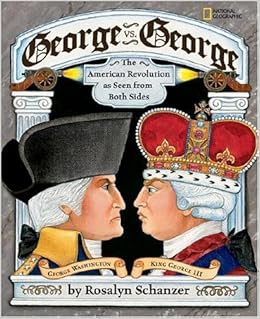







.jpeg)






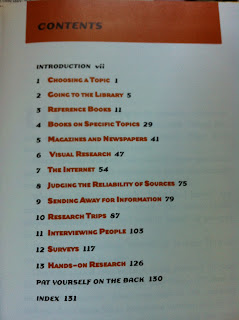

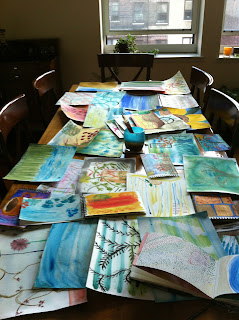





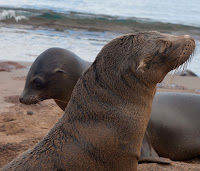

 6 Comments on Inspiration in Amsterdam and Sofia, last added: 6/21/2011
6 Comments on Inspiration in Amsterdam and Sofia, last added: 6/21/2011



 t’s what I’ve been told as I had never done one before. But Cynthia and the upper school librarian, Lora Wagner, thought that since I write for children and young adults, and since I’m a writer and photographer, two weeks would be a better fit. Two weeks in Morocco? How could I resist.
t’s what I’ve been told as I had never done one before. But Cynthia and the upper school librarian, Lora Wagner, thought that since I write for children and young adults, and since I’m a writer and photographer, two weeks would be a better fit. Two weeks in Morocco? How could I resist.




New movies release on DVD on Tuesday too, & when I worked at a video store that question haunted me too. As a reference librarian myself, I will commit myself to the search for a more definitive answer. Good luck in your hunt for the truth!
I hope you will find out! I'm hoping one answer will rise to the top as THE answer. Of course it does seem to be changing... hoping a publisher will weigh in about whether it will start being more fluid.
I read an article last year that said it's because of the shipping and setting up thing; if a book is released on a Monday, for example, the bookstore would be unpacking the boxes and setting the book out on its release day instead of having it already displayed on that date. I don't know why not Wednesday or another day, except that Tuesday's still early in the week.
First of all, I must point out that this is not universally the case. As I mentioned on Twitter: Only RH and Macmillan have strict Tuesday laydown dates for all titles. Other publishers like Harper and Penguin for example only have strict dates for a few select titles - generally "big" frontlist titles. Some publishers, like Scholastic for example, are the first of the month, whatever day of the week that may be. And some, like Lerner, assign a "pub date" but the real fact is, the book might show up in stores a month early, or just WHENEVER IT COMES.
So why have dates at all, and why are the dates so often Tuesday? I think it is a combo of reasons:
* For big books, they are timing media to coincide with the release week of the book.
* They want to be sure that all retailers have time to get the book in stock, received and on the shelf on the day and before said media hits and before the weekend when the most people shop.
* a laydown date helps ensure a level playing field. It's unfair if a NY bookstore has a book before a Calfornia store, or if Amazon has it for sale before physical bookstores, or whatever -- if NOBODY can sell it before that date, no one retailer will have an advantage over another (theoretically)
* Many NYT reporting stores collate their information on Monday, and can report anytime until Tuesday morning. IF you think your book has a chance of listing, you want to maximize the amount of time it is for sale that week, without the possibility of it bleeding into the week before.
just to throw a little dirt on the fire here, while the PUBLIC sees the book reviews on sunday, booksellers see those reviews as early as the wednesday before (i do at least); the book review is mailed early so we can read the reviews and order accordingly in time for them to be in the store after the review is published.
any bookseller who is ordering on a monday isn't getting that book before thursday.
books didn't always have a tuesday laydown (just as they didn't used to have prices printed on them) but these things solidified in the chains a little over a dozen years ago and may have been in part an effort to make sure they had an agreed upon target date to a national release.
but why tuesday? i think it's just one of those things that evolved. movies didn't always come out on fridays...
Thanks everyone! I think we are closer to the why... now I still wonder is it going to become more and more fluid as publishing evolves even more.
Stephanie Anderson, aka Bookavore, sent this:
http://www.blurbisaverb.com/2011/08/marketing-guru-carl-lennertz-on-why.html